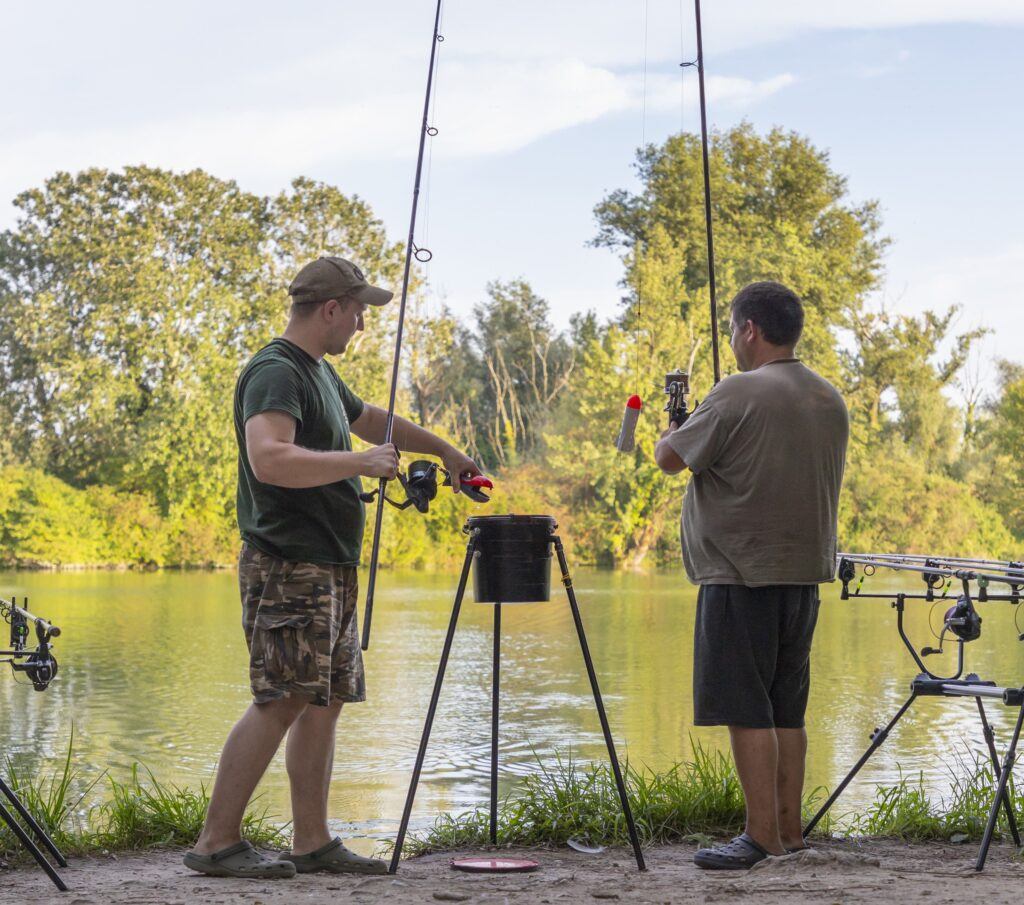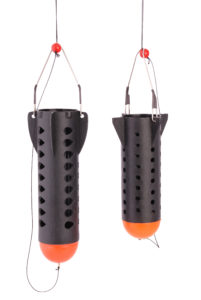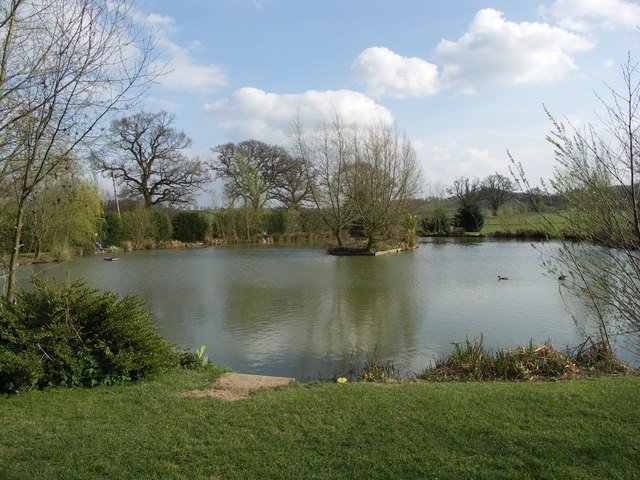
I’m sure all you beginner carp fishermen are dying to know “What a spod rod is?” but if you don’t, it’s about time you did. Having a spod rod on hand to fire on that spod and start baiting a far swim can be a highly effective way of catching more fish.
That’s what we all want, right?
In this post, I’ll give the rundown of what a spod rod actually is with a good few tips along the way.
It is very rare to find me heading out for a session on the banks without a spod rod in the boot, and I’m sure most serious carp anglers are the same.
What is a Spod Rod?
A spod rod is a rod designed with heavy casting in mind.
Spod rods are used to cast heavy “spods” (we’ll get into what a spod is further through the post) far distances.
Spod rods usually have progressive action, which refers to how much the rod bends under pressure.
When casting with a heavy spod, the rod will bend “progressively” throughout near enough the whole length of rod.
This will give power through the entire length of your rod from the butt allowing you to cast a full spod far distances efficiently.
Spod rods are made with heavy test curves of 3lb or above to ensure they can handle your spod full of carp freebies and will be built to high quality to ensure they don’t crumble under the pressure of casting heavy weights.
Test curves refer to how much weight it takes to bend the rod to 90 degrees of the butt. So basically, spod rods are made with high test curves to ensure they don’t bend uncontrollably under heavyweight and to provide lots of power through the cast.
What weight of spod you are planning to use should influence what test curve you opt for.
Generally speaking, if you plan to cast large spods with heavy baits inside, a higher test curve would be most desired.
On the other hand, if you are planning to use a smaller spod with lighter baits inside a 3lb test curve rod will handle the challenge no problem at all. Spod rods with test curves at around the 5lb mark will be ideal for casting a spod set up of around 10oz.
High-end spod rods with high test curves will have no issue casting weights surpassing 10oz if you really want to get massive amounts of baits into your swim.
These rods will usually come in 12ft or greater. This is because more length generally means more distance on the cast (if you are using a good quality rod and reel).
Distance of your cast is essential in using a spod rod as they are used to cast bait to areas that you can’t reach with a bait catapult or an excellent underarm throw.
So if you are fishing large lakes fishing at great distances, opt for the lengthier rod.
Spod rods are generally on the lighter side as they are used to cast regularly throughout your session.
This will stop your arm from getting sore from casting a packing spod all day. There’s only one downside to this.
If you opt for a rod that is too light you might struggle to find enough power through the cast to rocket your bait over 100 yards accurately.
This being said it mostly comes down to personal preference and how far you plan on casting.
If you are casting under the 100-yard mark, a lighter rod, with a suitable test curve, will handle this with no bother.
Opt for a heavier rod if you plan on casting over this 100-yard mark the majority of the time to make sure you’re getting that much-needed power through the cast.
Most spod rods are fitted with high-quality rings to aid in casting far distances as less friction is present on your line as your spod is propelled into the air.
Almost all spod rods are fitted with a 50mm butt ring which is also used to reduce friction and increase casting distances.
Spod rods are generally actually never used for fishing and are used as an accessory to your fishing but trust me utilising them properly can see you have some real productive sessions on the bank.
Spod rods range from about £50 all the way to a hefty £250. If you are looking for a spod rod on a budget, the Daiwa Black Widow Spod Rod is an exceptional rod for the money and will definitely hold up well for anyone looking to try spodding.
On the other end of the scale, if you are really looking to take spodding seriously and have some extra cash to spend then the Daiwa Longbow DF Spod rod is rated extremely highly (unfortunately, i don’t have the money to try it myself).
Make sure you attach some heavy line to the reel attached to your spod rod, as it will be under a lot of strain during casting.
12lb test braid should be ideal as it will be strong to not snap your spod off on the cast, but it will also be fine enough so friction doesn’t slow your spod down on the cast and affect your casting distance.
What is a spod?

Two spods of different sizes.
Ok now that you know what a spod rod is I am sure you are wondering what this spod we have been to referring to is, right?
A spod is basically a bait filled rocket. They come in varying weights and sizes depending on how much bait you want to fill it with or how much weight you need to cast to the desired distance. Spods will have a buoyant nose cone so when your spod hits the water it will tip up and empty all the contents to sink to the bottom providing a nice patch of goodies for the carp to swarm in and enjoy.
Spods can be filled with near enough any types of bait corn, boilies, particle baits or micro pellets are some of the most common baits.
Spods also help to keep bait controlled for baiting up precise areas as all of your bait will fall directly below your spod.
If you were to use a catapult or throwing stick your bait will usually spread wider as these methods are nowhere near as accurate.
Spods with a spod rod can be used as a shortcut from baiting up your swim with a method feeder.
When using a method feeder not a lot of bait is cast out at the one time so it takes many casts to effectively bait up a swim. With a spod you can fill it with plenty of bait to make baiting up a lot quicker and more efficient.
The art of Spodding
Now onto the good part.
As I said before spodding is single handedly the best way to bait up swims out of throwing or catapult range. The idea is rather simple if you follow the techniques and tips ill provide below.
The first and one of the most important things to consider is finding a swim, that in theory, should be the most productive.
Let’s be honest here though this is fishing and not catching so results can vary in certain swims from days to days or even hours to hours but you’ll still want to give yourself the best chance.

A carp fishing lake in the UK.
Expert anglers will be able to look at a lake and spot decent swims almost immediately.
For the inexperienced angler unfortunately this is usually not the case. So what are you looking for?
Well to start, when carp fishing the fish tend to sit close to “features” as this is where they feel safe.
Features can be anything from an island on the water, reed beds, overhanging trees, lilly pad patches or even underwater features that we can’t quite see such as branches or deep holes.
Another general rule is to follow the wind especially on warm summers day as the fish tend to follow the wind as this is where natural food sources will be most present.
If you are still completely unsure speaking to other anglers on the lake or speaking to the owners of local tackle stores can be an invaluable way of choosing a peg and a productive swim.
If you are fishing a commercial lake then the owner will be able to give you a lot of sight. Don’t be afraid to ask!
Now that you have chosen your swim you’ll want to tie your spod onto your spod rod and cast to this chosen swim.
When you are happy with the cast clip your line into the line clip on your reel.
This step is essential as it will ensure every time you cast you should be hitting the correct distance every time.
Now fill your spod with your chosen bait and get ready to cast again. Keep in mind that your spod will now be quite a bit heavier when making your cast so factor this is when you are ready to fire the spod out.
As you make your cast you want to make sure your cast is near perfect. Too much power and your line will hit the line clip too hard and the spod can bounce back slightly depositing your bait in the wrong place.
But too little power and your line won’t reach the line clip at all. This takes a lot of practice so don’t worry if you don’t get it right away.
I’d recommended picking a feature directly behind your chosen swim so every time you cast you are aiming for the same spot.
For example spot a tree or bush or even another peg directly in line with your chosen swim and aim for this every cast and your line clip will do the job at keeping at the right distance.
Make sure not to make your cast overly powerful or your line will hit the line clip with a lot of force and your spod will bounce back slightly.
As I’ve said before spodding is mainly about accuracy and a small mistake like this can mean all of your bait will be dropped outwith your swim.
Once you’ve cast to your swim don’t start reeling in straight away and give the spod time to empty fully. Even give it a small jerk as if you are setting a hook to make sure all the bait is out.
It really can be as simple as that you don’t need to over complicate it! Now repeat these steps until you are happy with how much bait is in the area.
Benefits of spodding – Try it!
There really is a lot of benefits when using a spod. Everyone should know!
- You can bait up a far swim easily without making lots of casts with a method feeder
- Almost any bait can be used
- Baiting up a swim properly helps attract carp into your swim and keep them there
- Can bait up areas you can’t throw to
These are four of the main benefits of using a spod rod and spodding and if you follow the steps I’ve provided you should have no issues at all and should see yourself into some decent fish in no time. If you are looking for some information on other rods have a read at my carp fishing rod post.
Have a read at my full guide on how to use a spod if you’re looking some extra info on spodding!
If you have anything to add or any questions feel free to leave a comment below and ill get back to you ASAP.

